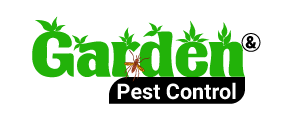Pest control specialists are able to offer targeted applications with the latest integrated pest control technologies to minimize the potential for humans and pets to come into contact with pesticides. Professional pest control engineers select the least toxic pesticides to solve pest control problems and protect human health and the environment. Modern professional pesticide equipment provides proper and effective direct application of pesticides to protect against unintentional pesticide contamination in the intended area.
How Safe Is Modern Pest Control for the Environment?

Crop rotation contributes to the control of pests by depriving them of their host plants. In this way, pests circle and trap crops and attract them, so that they are distracted by other plants in the field and it makes it easier to control them than other methods such as the use of pesticides. Also known as tillage, this is one of the oldest methods of weed control, and is particularly useful for pest control as wireworm larvae (often clicking beetles) are destructive pests and ploughing grassland for repeated management can expose them to birds and other predators that feed on them.
Pesticides are intended to kill pests, but they can have many damaging effects on non-target species, such as the harm done to honeybees, solitary bees and other pollinating insects, so the time of the day at which the spray is applied is important. Pesticides can be very easy to use, especially those contained in sprays.
Pest control methods are effective, cost-effective and do not pose a risk to humans or the environment. To avoid even the slightest risk, it makes sense to take a few simple precautions. With each product application, the personal situation is different and there are different instructions on how to apply to crawling babies and pets.
As a homeowner, you have many good reasons to prevent pests from invading your home. Carpenter ants, for example, can cause severe structural damage, and rodents can expose you and your family to serious health problems. The damage caused by pests can have an impact on the economy, and some are considered the most dangerous pests for housing, property and agriculture.
Depending on the type of pest, we can differentiate between different methods of pest control, including biological pest control, mechanical pest control and physical pest control (poisoning, baiting, field incineration, trapping, harvesting and use of pesticides). Integrated pest control programmes (IPM) control pests by relying on physical, cultural, biological and chemical strategies rather than synthetic chemicals.
When using pesticide products, it is best to use pesticides registered with and approved by ECA. The ECA reviews pesticides to ensure they are effective and safe for people and the environment.
While it is true that pesticides are chemicals used to control insects and other pests, it is not correct to tell consumers that a pesticide is dangerous for humans or pets. Pest control uses pesticide treatments that require the use of legal, modern pesticides in a safe and efficient manner.
In fact, insects and rodents in the past decade have shown more biochemical resistance (the ability to overcome or survive pesticide chemicals in their bodies) than the strongest chemicals available to kill modern beetles and rodents. Pest control should prioritise green technologies in the absence of pesticide treatments, which may end up being ineffective and not worth the effort. Safe chemicals and green methods should be used to protect the environment and people.
Integrated pest management (IPM) is an effective and environmentally sensitive approach to pest control based on a combination of common sense and practice. In practice, IPM growers are aware of the potential for pest infestation and follow a four-step approach. Organic food production, by contrast, uses many of the same concepts as IPM, but limits the use of pesticides from natural sources as opposed to synthetic chemicals.
Integrated Pest Management (IPM) uses the most up-to-date and comprehensive information on the life cycle of pests and their interactions with the environment. Professional pest control companies today specialises in integrated pest management to control insects and rodents, with the aim of preventing damage to the environment and human health. Integrated Pest Management (IPM) can be used in agricultural and non-agricultural environments such as homes, gardens and workplaces.
The best thing to do when dealing with pests is to contact a specialist. Pest-Control technicians use environmentally friendly pest control products, but it is important to protect your skin from direct contact.
After a pest control treatment you will probably find dead pests the following days. This have decreasing frequency every day after treatment. Be sure to throw away the dead pests, as they can attract other pests and lead to a new infestation.
If it is not possible to pull the plug, cover it with plastic wrap. Many homeowners wonder if it is safe to stay indoors during pest control or leave it for a while. Today, pest control companies are dispensing with toxic chemicals and switching to safer, more natural alternatives to keep your location pest-free.
Also read: How to Get Rid of Carpenter Beetles
Modern people have families and pets, and they live and work in the same neighborhoods they serve. They understand that pest experts make pest problems uncontrolled and a health and safety risk. Concerns often arise from the use of pesticides and materials to treat pest infestations.


